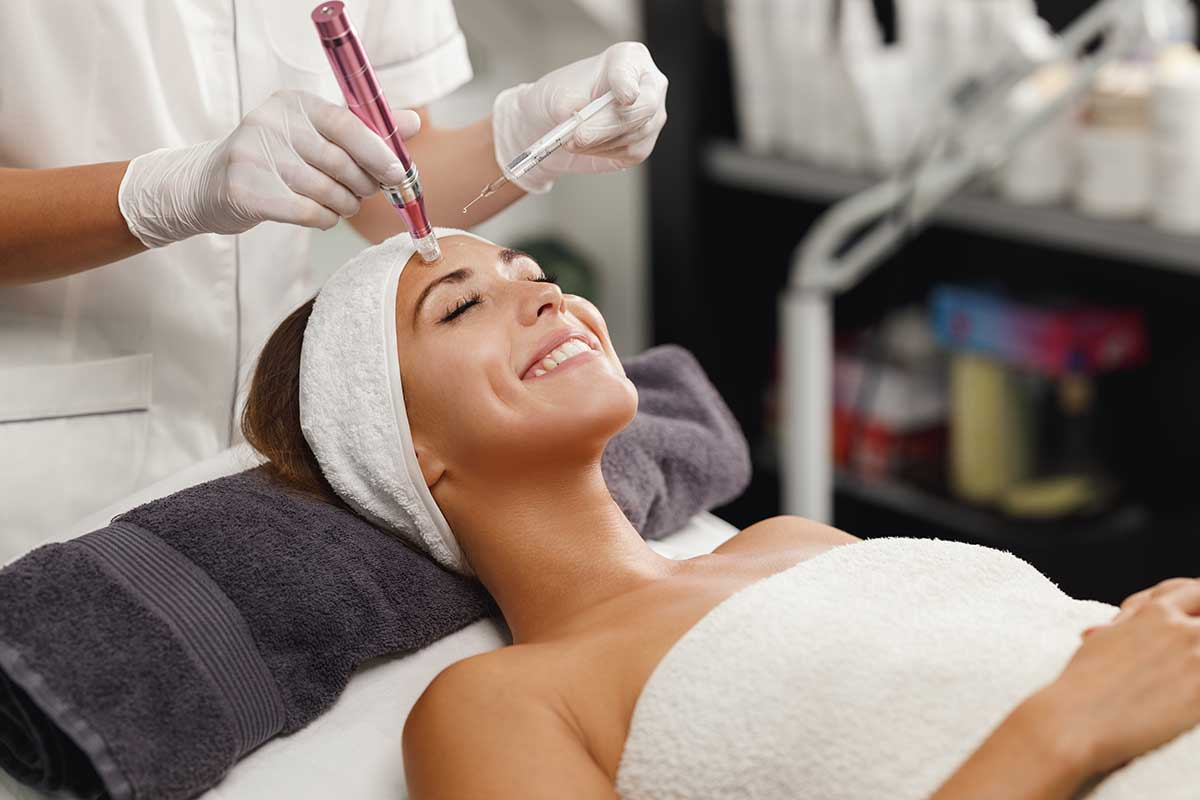
Microneedling
Microneedling is a minimally invasive cosmetic procedure that involves the use of tiny needles to create controlled micro-injuries in the skin. These small punctures stimulate the body's natural healing process, leading to increased collagen and elastin production, which improves skin texture, firmness, and overall appearance. The procedure is effective for treating a variety of skin concerns, including acne scars, fine lines, wrinkles, stretch marks, and hyperpigmentation.
During microneedling, a specialized device with fine needles is passed over the skin to create the micro-injuries. The procedure is safe for most skin types and can be performed on the face, neck, and other areas of the body. It is often used in combination with serums or platelet-rich plasma (PRP) to enhance results.
Types of Microneedling
Traditional Microneedling
Traditional Microneedling is performed using a dermaroller or microneedling pen equipped with tiny needles. These devices create microchannels in the skin, triggering the body's healing response and stimulating collagen production. Traditional microneedling is an excellent option for individuals looking to address fine lines, uneven skin texture, or mild acne scars.
The procedure typically takes 30 to 60 minutes, depending on the area being treated. While most patients experience mild redness and swelling after the session, recovery time is minimal, and the results can be seen within a few weeks. For optimal results, multiple sessions are often recommended, spaced about 4 to 6 weeks apart.
Microneedling with Radiofrequency (RF)
Microneedling with Radiofrequency (RF) combines the benefits of traditional microneedling with the added benefit of radiofrequency energy. In this treatment, the tiny needles penetrate the skin, while RF energy is delivered to the deeper layers of the skin to enhance collagen production. This combination makes RF microneedling particularly effective for deeper acne scars, skin laxity, and more severe wrinkles.
The addition of radiofrequency energy allows for deeper penetration and longer-lasting results. While the treatment is still minimally invasive, it may require a slightly longer recovery time due to the added heat element. However, the effects of RF microneedling can be more dramatic, with visible improvements in skin tightness and texture.
Advantages of Microneedling
Microneedling offers several key benefits:
- Collagen stimulation: By promoting collagen production, microneedling helps reduce the appearance of fine lines, wrinkles, and scars, giving the skin a smoother and firmer texture.
- Minimal downtime: Although the skin may appear red and slightly swollen immediately after the procedure, recovery is quick, and most patients return to their normal routine within 24 to 48 hours.
- Versatile treatment: Microneedling is effective for a range of skin concerns and is suitable for all skin types. It can be used on various areas of the body, including the face, neck, and décolletage.
The results of microneedling are gradual, with noticeable improvements appearing over the course of several weeks as collagen continues to build.
Frequently Asked Questions (FAQ)
1. How many sessions are needed for microneedling?
For optimal results, 3 to 6 sessions are typically recommended, depending on the severity of the skin concerns being treated. Each session is usually spaced 4 to 6 weeks apart.
2. Is microneedling painful?
While the procedure may cause some discomfort, a topical numbing cream is applied before the treatment to minimize any pain. Most patients describe the sensation as a mild tingling or prickling.
3. Can microneedling be combined with other treatments?
Yes, microneedling is often combined with treatments like PRP (platelet-rich plasma) or topical serums to enhance results. Your provider will recommend the best combination for your skin goals.
Microneedling Services at Clinic Consultation
At Clinic Consultation, we offer both traditional microneedling and advanced microneedling with RF to help you achieve smoother, healthier-looking skin. Our expert team provides personalized treatment plans tailored to your specific skin needs and goals.
Book an appointment today to experience the benefits of microneedling at Clinic Consultation and take the first step toward rejuvenated skin.
Click the button below to schedule your appointment online.